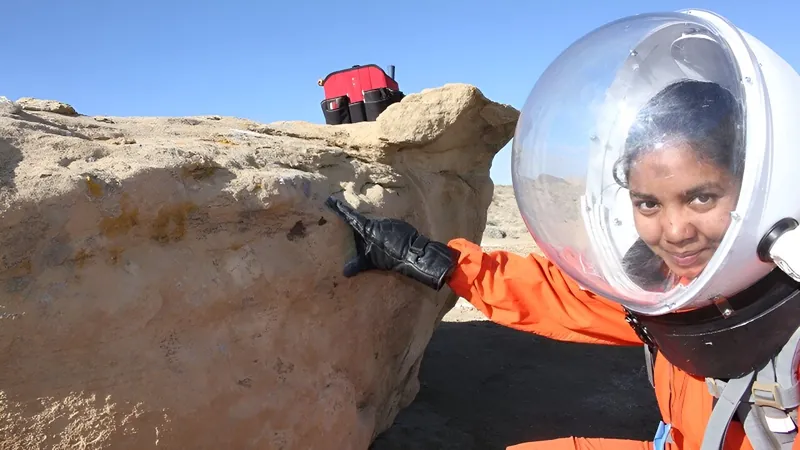
Discovering Lichen Biodiversity on Mars: Groundbreaking Research from Simulated Missions!
2024-10-11
Author: Olivia
When you think of lichen, you might picture the resilient organisms clinging to rocks and trees in the most inhospitable environments. But did you know that these fascinating composite organisms—formed by a partnership between fungi and photosynthetic partners—can thrive almost anywhere? From rugged landscapes to urban structures, lichens are a testament to life's adaptability and resilience. In fact, some species have even withstood the harsh conditions of outer space, proving just how tough they really are.
This remarkable durability has sparked keen interest among scientists, particularly astrobiologists who are curious about which life forms could potentially survive on Mars. Researchers are using Earth’s ecosystems as analogs to understand life beyond our planet. At the Mars Desert Research Station in Utah, USA, and the Flashline Mars Arctic Research Station in Nunavut, Canada, they are uncovering the invaluable roles lichens play in local ecosystems through innovative biodiversity assessments during simulated Martian missions.
The Mars Society operates these stations, which serve as training grounds for future crewed missions to the red planet. There, crews—often referred to as "Martians"—simulate the challenges of life on Mars while studying how to document microbial life and potential biosignatures. Their work is crucial for refining techniques that could one day be applied on Mars.
In an exciting twist, the Mars 160 missions, conducted in 2016 and 2017, included a comprehensive survey of lichen biodiversity at both research sites. During these missions, researchers donned simulated spacesuits for extra-vehicular activities, meticulously exploring the unique microhabitats across the arid deserts of Utah and Nunavut.
With their painstaking efforts, the Mars 160 team collected over 150 lichen specimens that were sent to the National Herbarium of Canada at the Canadian Museum of Nature for analysis. Using a combination of morphological examinations, internal anatomy and chemical investigations, and advanced DNA barcoding techniques, the research team identified a stunning 35 lichen species from the Mars Desert Research Station, along with an additional 13 species from the Arctic facility.
This groundbreaking research not only expands our understanding of lichen biodiversity but also lays the groundwork for future missions to Mars. As we search for signs of life on the red planet, studies like these are essential in understanding how Earth's inhabitants might adapt to extraterrestrial environments. Could lichens hold the key to discovering life beyond our world? Only time and research will tell!









 Brasil (PT)
Brasil (PT)
 Canada (EN)
Canada (EN)
 Chile (ES)
Chile (ES)
 España (ES)
España (ES)
 France (FR)
France (FR)
 Hong Kong (EN)
Hong Kong (EN)
 Italia (IT)
Italia (IT)
 日本 (JA)
日本 (JA)
 Magyarország (HU)
Magyarország (HU)
 Norge (NO)
Norge (NO)
 Polska (PL)
Polska (PL)
 Schweiz (DE)
Schweiz (DE)
 Singapore (EN)
Singapore (EN)
 Sverige (SV)
Sverige (SV)
 Suomi (FI)
Suomi (FI)
 Türkiye (TR)
Türkiye (TR)